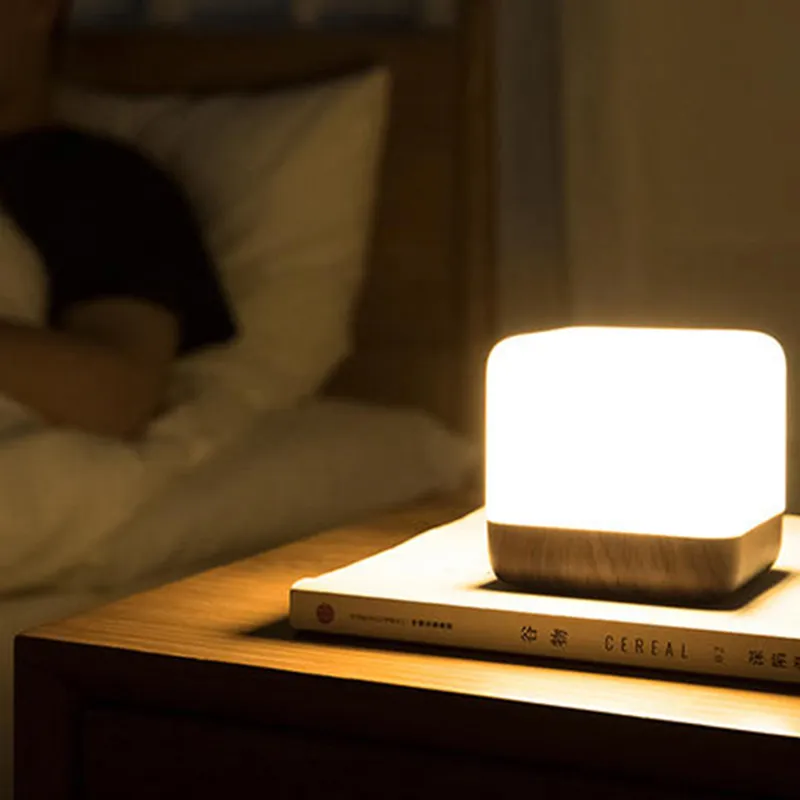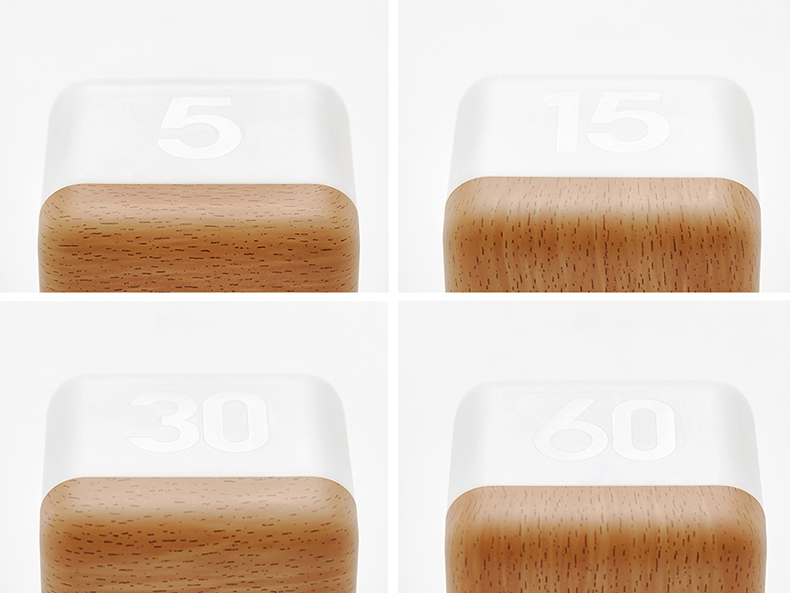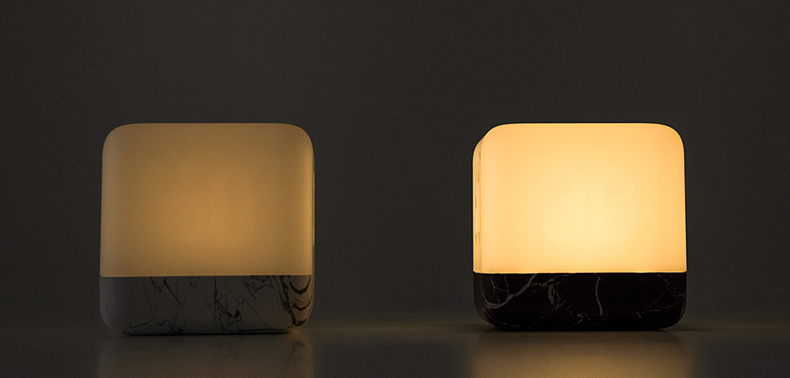What's the best LED night light for toddlers?
In modern family life, night lights are more than just lighting tools; they're crucial for protecting children's nighttime safety and helping them develop good sleep habits. As families increasingly prioritize their children's sleeping environment, choosing a scientific, safe, and comfortable night light has become a crucial task for every parent.
So, what's the best LED night light for toddlers? This article will provide expert answers from the perspectives of safety, light source characteristics, functional design, ease of use, and psychological comfort.

What are the light needs of toddlers during nighttime sleep?
Infants and young children's physiological characteristics dictate that they are more sensitive to light than adults. Their retinas are not fully developed yet, so strong or flickering light can easily irritate their eyes, causing discomfort and even disrupting sleep quality. Furthermore, an excessively dark environment can frighten children and disrupt their ability to fall asleep. Therefore, toddlers require soft, even, and stable light for their nighttime sleep.
Practical research has found that nighttime light should not exceed 10 lux. Warm light with a color temperature between 2700K and 3500K can better simulate natural nighttime light, promote melatonin secretion, and thus help young children fall asleep more quickly. This is why LED night lights are becoming the preferred choice for home use.
What are the advantages of LED night lights?
Compared to traditional incandescent or fluorescent lamps, LED night lights offer the following significant advantages:
• Low energy consumption and high brightness: LED lights are highly efficient, consuming far less power than incandescent lamps at the same brightness, eliminating the energy waste caused by leaving night lights on for extended periods.
• Low heat dissipation: Traditional incandescent lamps easily overheat, posing a risk of burning children. LED night lights, however, generate virtually no heat, making them ideal for bedside tables or children's rooms.
• Soft and adjustable light color: Modern LED night lights often feature adjustable brightness and color temperature, allowing parents to adjust the light intensity according to their children's sleep stages, creating a gradual lighting effect.
• Long lifespan and low maintenance: LED light sources have a lifespan of 20,000 to 50,000 hours and require no frequent replacement, reducing operating costs and maintenance burdens.
• Flicker-free design: Flickering light sources can irritate young children's eyes, causing visual fatigue or waking them at night. High-quality LED night lights use a stable current drive to ensure continuous and steady light.
Based on these characteristics, LED night lights not only meet basic lighting needs but also offer far superior safety and comfort compared to traditional night lights.

Children's Sleep: How to Choose the Color Temperature of an LED Night Light?
Color temperature is one of the most critical parameters in night light design. A color temperature that is too high (white or bluish) can suppress melatonin secretion and delay sleep onset. A color temperature that is too low (reddish or orange) can provide a comfortable light but may not be bright enough to meet the needs of nighttime safety.
Based on extensive research and family practice, warm white light between 2700K and 3000K is considered the most suitable color range for young children's sleep. This type of light is not only soft and natural, but also prevents children from being startled by light when they wake at night, while maintaining sufficient brightness for them to observe their surroundings. Furthermore, some high-end LED night lights offer multiple dimming modes, allowing parents to select the most appropriate light intensity for their children's age and sleep habits.
Children's Sleep: What Features Should an LED Night Light Provide?
Modern LED night lights are more than just lighting tools; their functional designs fully consider the psychological and safety needs of young children:
• Sensor-activated Design: Some LED night lights are equipped with infrared or microwave sensors, automatically illuminating when a child wakes up or is active, and automatically shutting off at other times, saving energy and reducing light pollution.
• Timed Off: 30-, 60-, or 120-minute timers are available, helping children gradually adjust to darkness at night and establish a regular sleep schedule.
• Soft Light Diffusion Shade: A frosted or silicone shade gently diffuses light, preventing direct light glare and improving visual comfort.
• Low Blue Light Technology: Blue light can suppress melatonin production and disrupt sleep. High-quality LED night lights typically reduce the amount of blue light and use warm colors, making them more suitable for bedtime.
• Cute designs: Interesting designs such as animals, starry skies, and the moon can appeal to children's visual interest, alleviate sleep anxiety, and increase the psychological comfort of the night light.
These designs not only protect children's eyes physically but also enhance their sense of safety psychologically.

What are the safety standards for LED night lights?
The safety of toddler night lights is a top concern for parents. When choosing an LED night light, consider the following criteria:
• Material safety: The housing should be made of non-toxic, shatter-resistant ABS or silicone to prevent harm from children.
• Fireproof and waterproof design: The light should comply with international fire safety standards (such as UL and CE certifications) to prevent fires caused by overheating of the circuitry. For bathrooms or humid environments, choose a product with a waterproof rating of IP44 or higher.
• Power supply safety: It is recommended to use a low-voltage DC power supply (DC 5V or 12V) to reduce the risk of electric shock. If the light is rechargeable, it must support overcharge protection.
• Stable light source: Flickering, strobing, or flashing lights can irritate young children's eyes, causing headaches or night terrors. Therefore, choosing an LED night light with a stable current is crucial.
• Drop-resistant and durable: Young children are curious, and night lights can easily be knocked over. High-quality LED night lights should pass drop tests to ensure they remain functional even after repeated impacts.
Based on the above criteria, consider LED night lights with international or domestic safety certifications when purchasing.
In Children's Sleep: What psychological benefits do LED night lights provide?
Beyond physical safety and optical properties, LED night lights are equally important for children's mental health:
• Alleviating nighttime fears: Young children often experience fear in the dark. A soft LED night light can provide a sense of security and help children fall asleep smoothly.
• Establishing a sleep routine: A consistent night light brightness and color can create a conditioned stimulus, allowing children to form the psychological association of "night light on = bedtime," fostering healthy sleep habits.
• Assisting with nighttime self-activity: When a toddler wakes at night, soft light allows them to find toys or go to the bathroom on their own without waking parents or themselves due to bright light.
• Promoting parent-child interaction: Some LED night lights feature color switching and interactive shapes, allowing parents to play with their toddler to enhance parent-child bonding.
Therefore, choosing the right LED night light is not just about lighting; it's crucial to optimizing a child's sleep environment and psychological development.

Where should an LED night light be placed?
Placement directly impacts the lighting quality and safety of an LED night light. Appropriate placement can help improve sleep quality:
• To the side or foot of the bed: Avoid direct sunlight into the child's eyes, ensuring that light covers the entire sleeping area.
• Mounting on a wall or in a corner: Creates a soft, diffused light environment, reducing glare.
• Keeping the light away from electrical outlets and within easy reach of children: Reduces the risk of electric shock or cord damage.
• Adjusting the light to suit the child's activity path: The night light should cover areas where the child spends time at night, such as the route from the bed to the bathroom, to ensure safety.
Correct placement can maximize the safety and practicality of an LED night light.
Can Huari Lighting handle large purchasing orders?
Yes. Our monthly production capacity of more than 1,000,000 pieces allows us to supply massive bulk orders without delay. From LED downlights to track lamps and panel lights, we maintain sufficient stock and production lines to meet urgent wholesale needs. Buyers purchasing from Huari benefit from factory-direct prices, strong supply ability, and discounts for high-volume sales.
If you are searching for a reliable Chinese manufacturer to handle continuous purchasing at low prices, Huari is the right partner.
